This was recently posted on Hemingway Facebook page . I pasted it a few years ago but in light of the PBS special, i thought i’d repost as it is so much fun. If you have not seen it before, enjoy!
Author: Christine Whitehead
The PBS Special on Hemingway: Thoughts
It was quite a 3-night extravaganza of Hemingway on PBS. I’m very interested in what you all thought since we are a bit inside the loop in terms of already having an interest and not coming to the subject matter completely without preconceptions and knowledge.
When I first read about Ken Burns and Lynn Novick doing the series, I was hopeful that it would be balanced. Then when I heard some reviews, I became fearful that it was going to be a hatchet job. After watching all three parts myself, I thought it was fair. Because I know so much about Hemingway already, not a lot was new to me and perhaps that took some of the sparkle out of it. However, I felt that while there were some portions in which he showed up badly, that was him at times and it can’t be avoided if a true portrait is being drawn. And based on all of my reading, when he was bad, he was really bad. Even without the booze, some of his letters were just atrocious. Others, however, were warm, loving and very funny. A man who for weeks slept outside his son Patrick’s room when he was ill to be sure he made it through was the same man who was cruel to Gregory as well as to each of his wives. He was complicated.
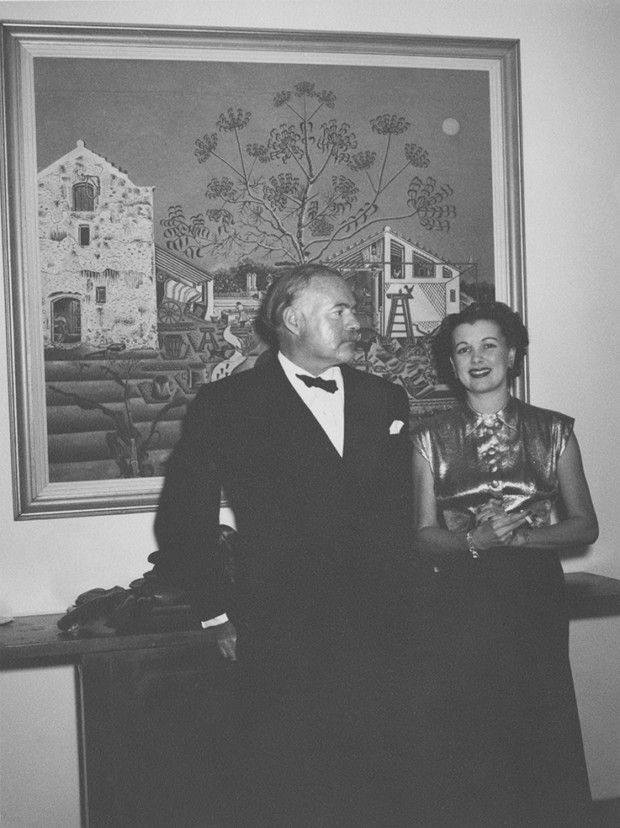
I thought they did a good job in exploring the impact of numerous severe concussions throughout his life. When you layer that in with extreme alcoholism and add in a significant swath of mental illness in terms of depression which developed a paranoid component, you have a man whose behavior at any moment could be unexplainable and incomprehensible. I do think anyone who didn’t know much about Hemingway would come away with a sense of a complexity and a sense of the highs and lows, and an interest, perhaps, of knowing more and reading more.
Because it’s an interesting issue of the times, Hemingway’s writings that deal with some fluidity of gender is an interesting issue to explore. I think that those who’ve read a lot of Hemingway and about Hemingway realize that the macho bluster he created, promoted and perpetuated was not all of him – not by a mile. I also have always resented people who write that Hemingway was cruel to Fitzgerald and to Harold Loeb in A Moveable Feast. He was and it was not pleasant to see. However, he also didn’t publish it. It was published posthumously and he didn’t edit it. For all we know, that might have been changed greatly, so I read A Moveable Feast – a book I love – nevertheless realizing he did not have the last say on how it came out or how it was edited.
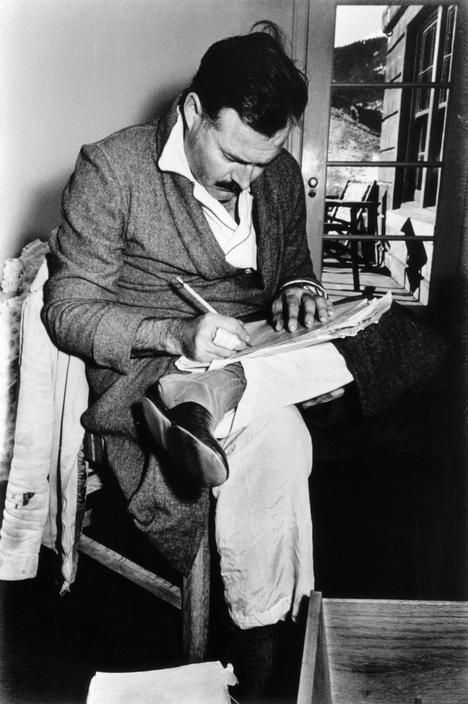
Many of you know much more about Hemingway than I do and I began this blog in order to be educated by others. Please let me know your thoughts on the special.
Warmest wishes and please keep reading and caring about his writing and him.
Christine
P.S. June 1, 2021, my novel–Hemingway’s Daugther will be published. Please look for it if you have an interest. Thank you! C
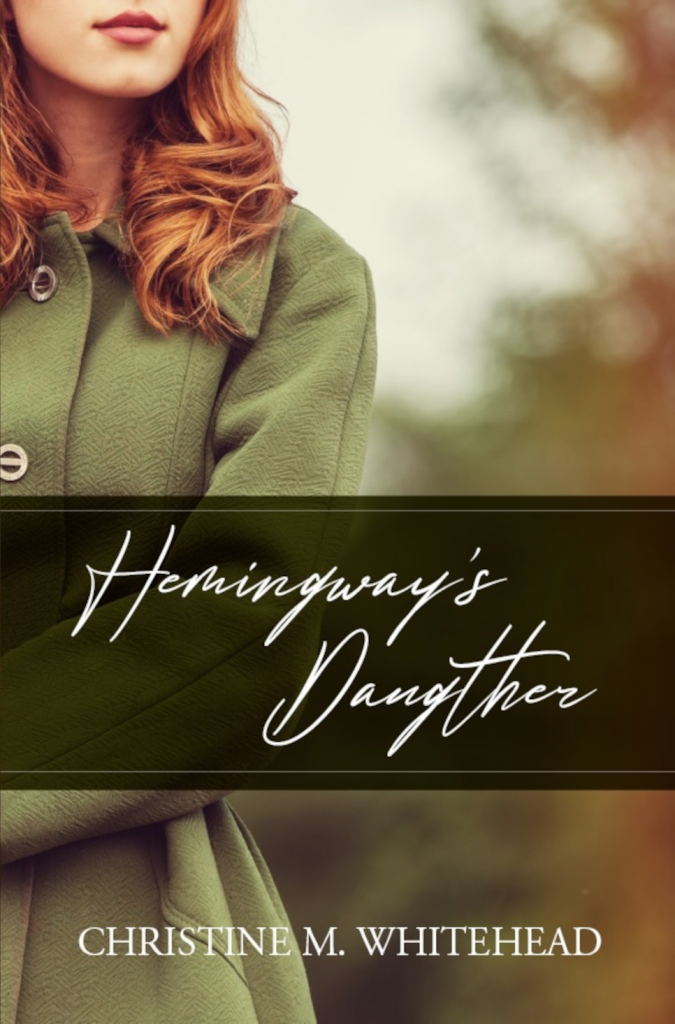
NEW HEMINGWAY BOOK: Dear Readers: As we finish watching the PBS Hemingway Special, I wanted to share the new book written by a scholar and friend from an active and avid Facebook group. It looks wonderful! Best to all and I look forward to comments on the Special. Part I was balanced, I thought. We’ll see. Best, Christine
NEWS FROM WILD RIVER PRESS
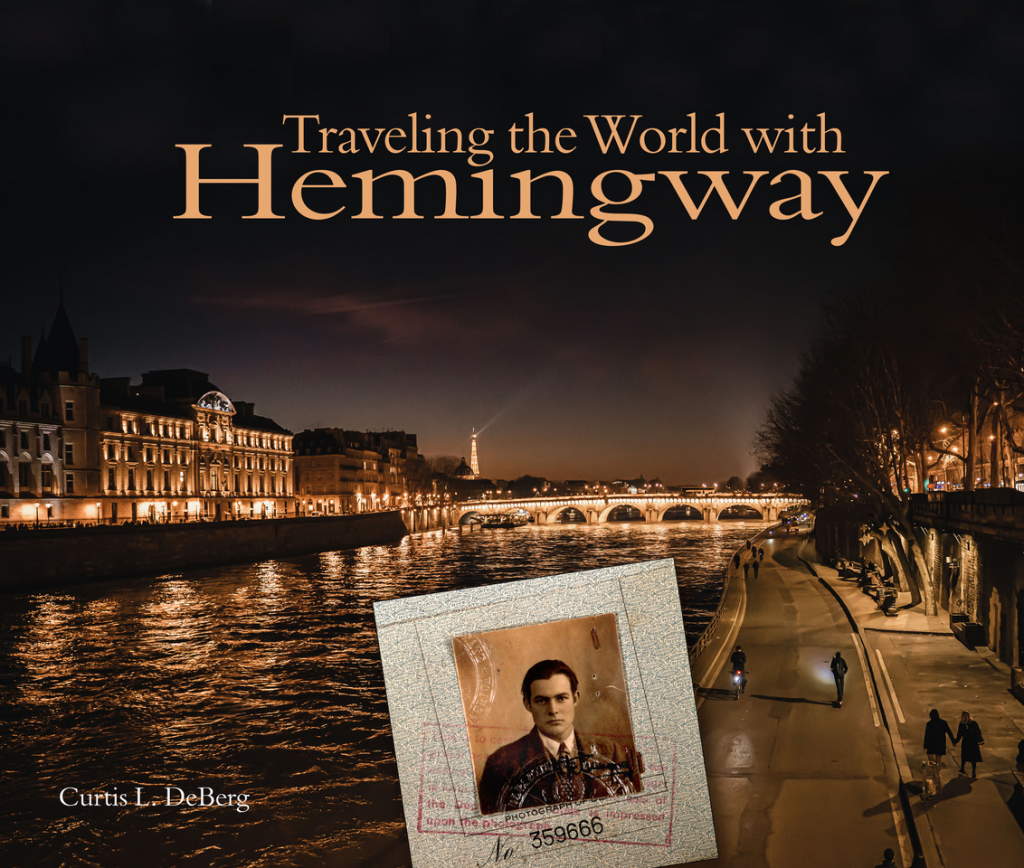
A Perfect Tonic for the Literate (and Pandemic-Weary) Traveler
Traveling The World With Hemingway
Curtis L. DeBerg, PhD
This lavish over-size 10 x 12 book in beautiful landscape format brings to life the more than one dozen exciting places the great 20th-century novelist Ernest Hemingway called home—for short periods or for years.
When Hemingway’s prose burst on the scene it was considered highly original for its spare, compact yet evocative style. His writing influenced generations of novelists and journalists; his books are still avidly read around the world.
Hemingway won the 1953 Pulitzer Prize for Fiction and in 1954 was awarded the Nobel Prize for Literature. Among his enduring legacies in print are A Farewell to Arms (1929), For Whom the Bell Tolls (1940), The Old Man and the Sea (1951), the posthumously published memoir of his young years in Paris, A Moveable Feast (1964), and The Nick Adams Stories (1972), thematic short stories from various early collections.
In Traveling The World With Hemingway, hundreds of spectacular new digital images capture the odyssey of the adventurous author’s remarkable life. Starting at his birthplace home in Oak Park, Illinois, you’ll follow his footsteps north to his boyhood summer home near Lake Superior in northern Michigan. Then away to the Italian front during World War I and falling in love in Milan; the cafes of Paris and the bullfight rings of Pamplona; marlin fishing off Key West and hunting in Sun Valley, surviving back-to-back plane crashes in Africa and chasing Nazi subs out of Havana. Ernest Hemingway made all these places and more as vivid and indelible as his fictional characters.
Juxtaposed against page after page of lush landscapes and cityscapes are historic sepia portraits of the author, friends and family in all these far-flung locations. Each chapter opens with a colorful quote from Hemingway about the place you are about to visit as you turn these gorgeous pages.
This is a visual treasure book filled with the romance and inspiration of a great writer’s favorite places—the perfect tonic for the literate (and pandemic-weary) traveler.
* * *
Traveling The World With Hemingway will be released in June 2021 by Wild River Press, winner of multiple Benjamin Franklin Gold Medals for excellence in independent publishing since 2005.
ISBN 9781735541501
Hardcover 10 x 12 landscape format
All-color 240 pages printed on luxurious matte stock
Illustrated with hundreds of contemporary color with historical archival photos
Retail price: $75 for hardcover standard edition with color jacket
Direct from the publisher exclusively: $300 author’s signed and numbered limited edition of 100 copies only, bound in gold-stamped black leather with matching collector’s slipcase
* * *
ABOUT THE AUTHOR
Curtis L. DeBerg became intrigued with Ernest Hemingway when he first traveled to Key West in 2005, to visit a cousin who owned a vacation home near Geiger Key. After 40 years as university professor in California, Dr. DeBerg retired in 2020 to devote his time to researching Hemingway and traveling the world in his footsteps—an ambitious journey no one had ever before attempted on this epic scale. He is a member of The Hemingway Society, a group connecting scholars and historians who love and promote the works of Ernest Hemingway. It has 600 members worldwide, and is one of the largest single-author organizations in existence. He is also a group administrator of the active Facebook group “Ernest Hemingway,” which currently has 28,000 members.
* * *
For interviews with the author or reprint permission, contact Thomas R. Pero, Publisher, at tom@wildriverpress.com or phone 425-486-3638
Random Bits of Information
As I await anxiously for the Ken Burns and Lynn Novick PBS film, I’ve come across various and random Hemingway nuggets. Just thought I’d share. Here are a few:
- Hemingway had a knack for using common sense to observe life and in so doing, saying something that’s simple but applicable to so many other things in life. “Anyone can be a fisherman in May,” said Santiago in The Old Man and the Sea. Were truer words ever written down?
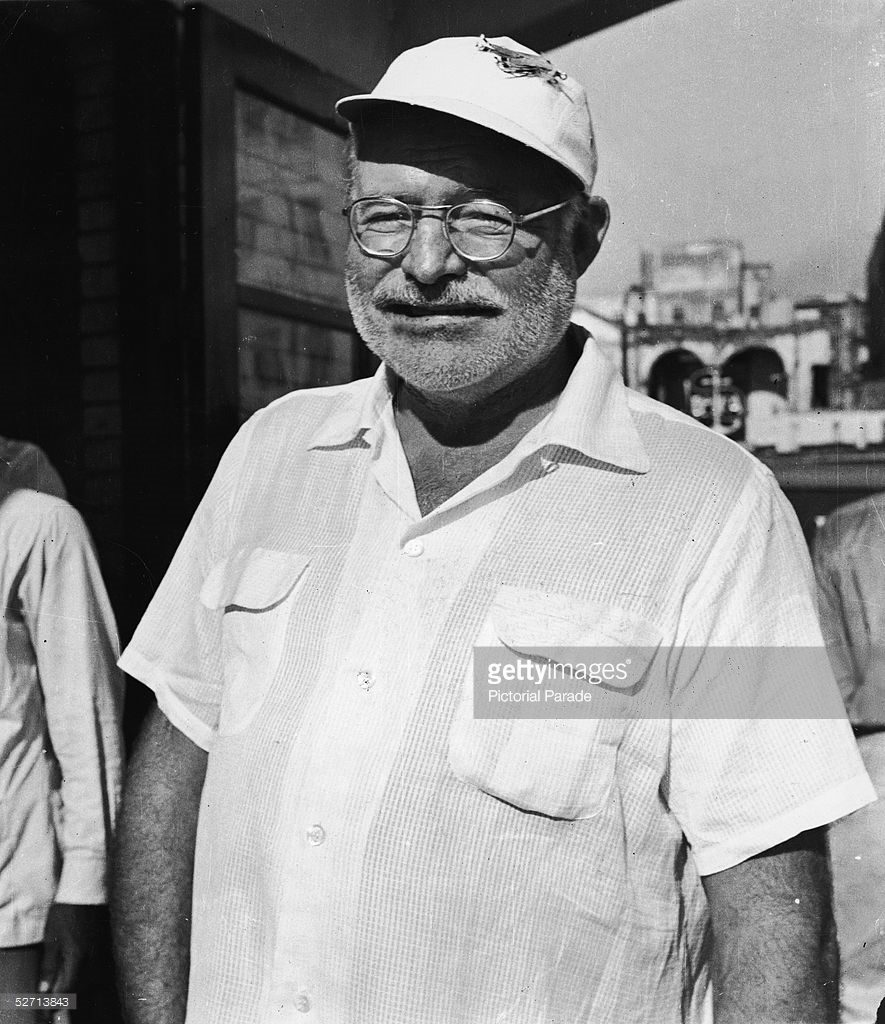
- Steve Gardiner wrote an article about bridges in books. He noted in particular The Bridge of San Luis Rey by Thorton Wilder, An Occurrence at Owl Creek Bridge by Ambrose Bierce, The Bridge on the River Kwai by Pierre Boulle, The Bridges of Madison County by Robert James Waller, and For Whom the Bell Tolls by Ernest Hemingway. I never thought about it before but bridges connect, can be blown up and divide, and have been historically significant.
- A new book has come out called Ernest Hemingway: Artifacts From A Life. It’s being sold a number of places but also at the JFK Library and Museum. It’s “beautifully designed, intimate and illuminating. This is the story of American icon Ernest Hemingway’s life through the documents, photographs and miscellaneous items he kept, compiled by the steward of the Hemingway estate and featuring contributions by his son and grandson. ($35.00)
- In an article about what books are on celebrities’ shelves, film maker and author Devashish Makhija, whose recent release Oonga is receiving rave reviews, in answer to the question “Who are your favorite authors?” cites three: a) Dashiel Hammett for sharp incisive blasts of emotion he injects in his prose; b) Ernest Hemingway for how he arrives as the heart of the human condition; c) Alice Munro for the delicateness with which she makes us feel.
- The author Walter Scott in an article for Parade, said Hemingway’s favorite meal was a New York strip steak, a baked potato, a Caesar salad, and a glass of Bordeaux. (Sounds really good to me.)
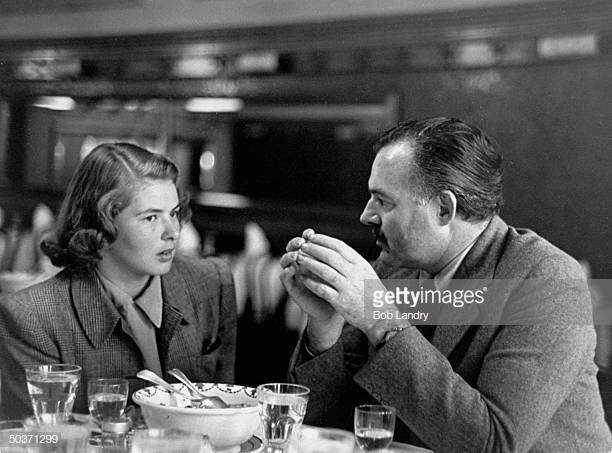
- Hemingway dedicated a book to each of his four wives: a) The Sun Also Rises to Hadley. He also in their divorce signed over all royalties which included movie proceeds. That was the gift that kept on giving but he had nothing in 1926 when he left Hadley. They had a son. He felt guilty. And Hadley was not greedy. It could have been an empty gift but . .. it wasn’t; b) Death In The Afternoon to Pauline (I’m not sure she would have liked that but I think she would have preferred Farwell To Arms which he dedicated to her Uncle Gus Pfeiffer; c) For Whom The Bell Tolls to Martha; d) Across The River And Into The Trees to Mary. (I don’t think she’d like that either since Adriana was the prototype for Renata but I suppose it’s better than nothing!)
May we all enjoy the Hemingway PBS movie. I’m really hoping they show both sides of him not just the bad side.
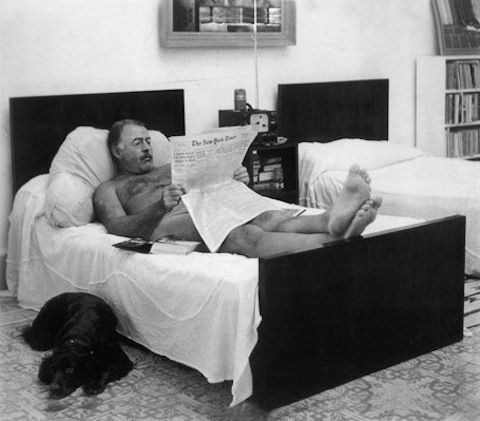
Best to all,
Christine
Hemingway: never out of Fashion
Hemingway’s works as well as his life are being mined for material–and there is a lot of richness there as we know. See below.
The Sound & The Flurry: How Podcasts Are Becoming A Hollywood Gold Mine
Village Roadshow has increasingly been expanding its television business including adapting Ernest Hemingway’s A Moveable Feast, a reboot of College Bowl, an adaptation of video-game Myst and Lo Life, a scripted series based on the Brooklyn street crew led by Big Vic Lo.
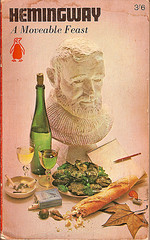
Alix Jaffe, VREG’s Executive Vice President, Television, who will oversee the relationship, said, “As we continue to build our television division, we have the unique opportunity to partner with Kelly and the team at Treefort Media to expand our slate with premium, cross-platform storytelling that will create a more immersive experience for audiences. We believe there is an incredible synergy between our teams and are looking forward to the partnership.”
Kelly Garner, Treefort’s Founder and CEO added, “This is an incredible opportunity not only to collaborate with Village Roadshow’s talented team, but also to supercharge our slate by tapping into Village Roadshow’s iconic and diverse library. We can’t wait to explore the possibilities and expand our pipeline into TV and film.”
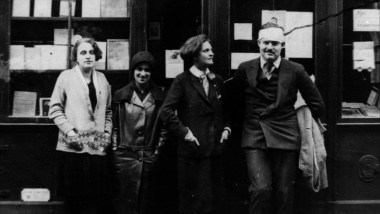
Treefort is represented by UTA.
Hemingway’s Death: July 1, 1961
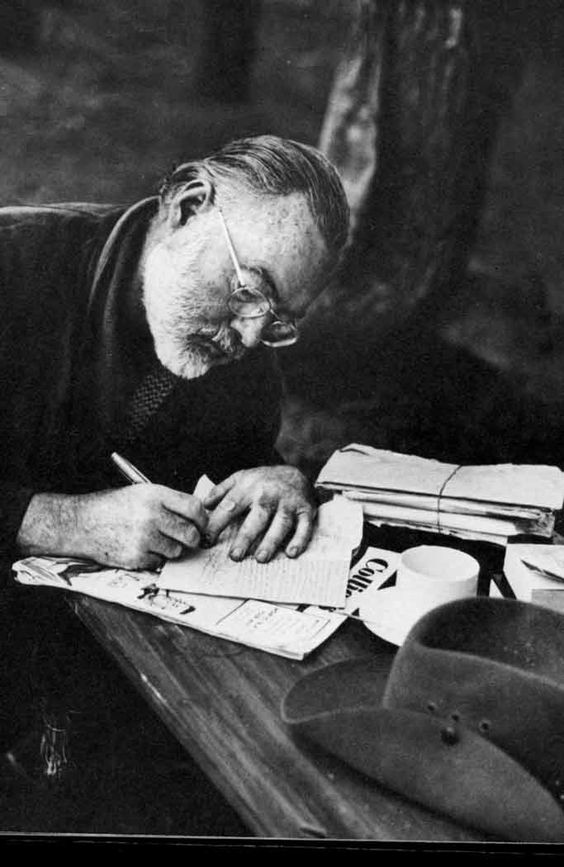
It is awfully easy to be hard-boiled about everything in the daytime, but at night it is another thing. The Sun Also Rises, Ernest Hemingway
There is no lonelier man in death, except the suicide, than that man who has lived many years with a good wife and then outlived her. If two people love each other there can be no happy end to it.
Ernest Hemingway
Hemingway killed himself on July 1, 1961. It’s sad to think about but he was true to himself to the end. His great companion, A. E. Hotchner, who just passed away himself within the past several months, wrote an essay about the death and I attach the link here.

Hotchner met Hemingway while doing a story for Cosmopolitan, which was about the future of everything: art, music, theater, and literature. They asked a young journalist to go down to Cuba and interview Hemingway. I won’t repeat what I’ve written before about their meeting.
Suffice to say for this post that Hotchner remained to the end a trusted confidant, hell-raiser when necessary, collaborator on projects, and loyal friend. As he notes in his article, he dramatized many of Hemingway’s stories and novels for TV and the movies, and they traveled through Europe together often.

Hotchner, in his article, notes that Hemingway called him in May of 1960 from Cuba. Hem had been asked by Life magazine to cut a 92,000 word article down to 40,000. A month later, Hem had only cut out about 534 words. He asked Hotchner to come to Cuba to help him. He did go and got the job done, but Hotchner noted that Hem was “bone tired and very beat up.” He assumed that after a period of rest, Hem would be back to his hale old self.
Much has been written about Hemingway’s paranoia and the last year of his life. He felt that the feds, the FBI, the IRS or all were following him and out to get him. During dinner with Hem and Mary (Hemingway’s fourth wife), Hem indicated halfway through the meal that they had to leave because two FBI agents at the bar were watching him. At the time Hemingway was working on A Moveable Feast, having difficultly, although most of the Paris sketches were all set and down on paper. He often spoke of suicide. His father had killed himself.
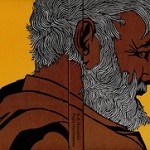
During the last eight months of Hemingway’s life, he received eleven electric shock treatments at St. Mary’s Hospital in Rochester, Minnesota. During a short release, he attempted suicide twice with a gun; on a flight to the Mayo Clinic, he tried to jump from the plane. When it stopped in Casper, Wyoming, for repairs, he tried to walk into the moving propeller.
When Hotchner visited him in June, he’d been given a new series of shock treatments and insisted that his room was bugged. When Hochner asked him, “Papa, why do you want to kill yourself,” he replied, “What do you think happens to a man going on 62 when he realizes that he can never write the books and stories he promised himself? And do any of the other things he promised himself on the good days?” Hotchner noted that he’d written a beautiful book about Paris and Hem replied, “The best of that I wrote before. And now I can’t finish it.”

When Hotch suggested he could relax or retire, Hem noted, “How does a writer retire? Everywhere he goes he hears the same damn question: what are you working on?”
The irony is that decades later in response to a Freedom of Information petition, the FBI released its Hemingway file. J. Edgar Hoover had placed Hemingway under surveillance because he was suspicious of his activities in Cuba. Agents filed reports and tapped his phones. The surveillance continued all through his confinement at St. Mary’s Hospital and it’s likely that the phone outside of his room was tapped after all.
Hotch ends the article noting that he believes Hemingway truly sensed the surveillance and that it contributed to his anguish and his suicide.
The above borrows heavily from the article by A. E. Hotchner, so I urge you to read it directly. Hotchner also wrote the wonderful book “Papa Hemingway” and “Hemingway and His World.” I love his writing and his view of Hem as a true friend, not just as “Hemingway.” There’s not a better source, in my opinion, for getting a real flavor of what it was like to be part of Hemingway’s posse and inner circle.
http://www.nytimes.com/2011/07/02/opinion/02hotchner.html?pagewanted=all&_r=0
RIP, Hem.
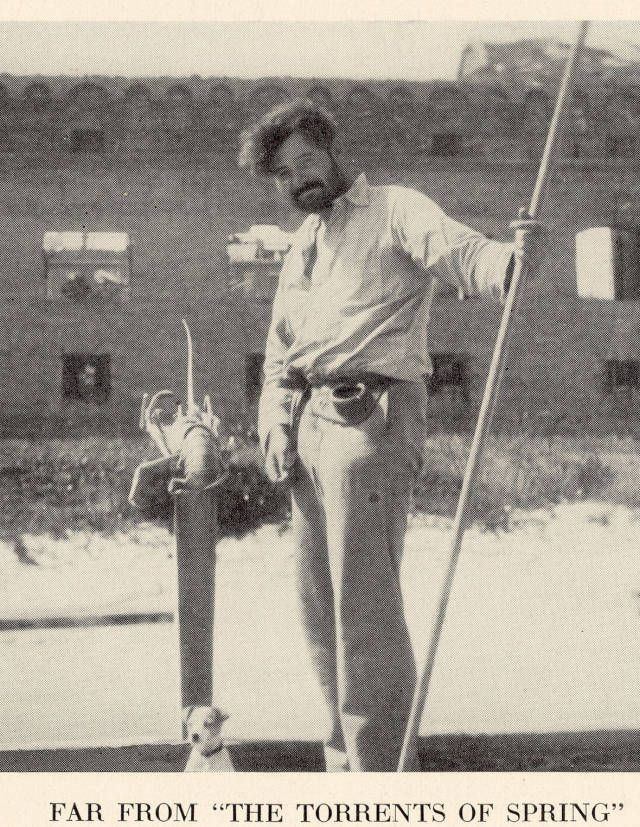
young man: all of it ahead of him.
PBS FILM: PREMIERES APRIL 5-7 2021
HAPPY NEW YEAR!!
Hemingway – A Film by Ken Burns & Lynn Novick
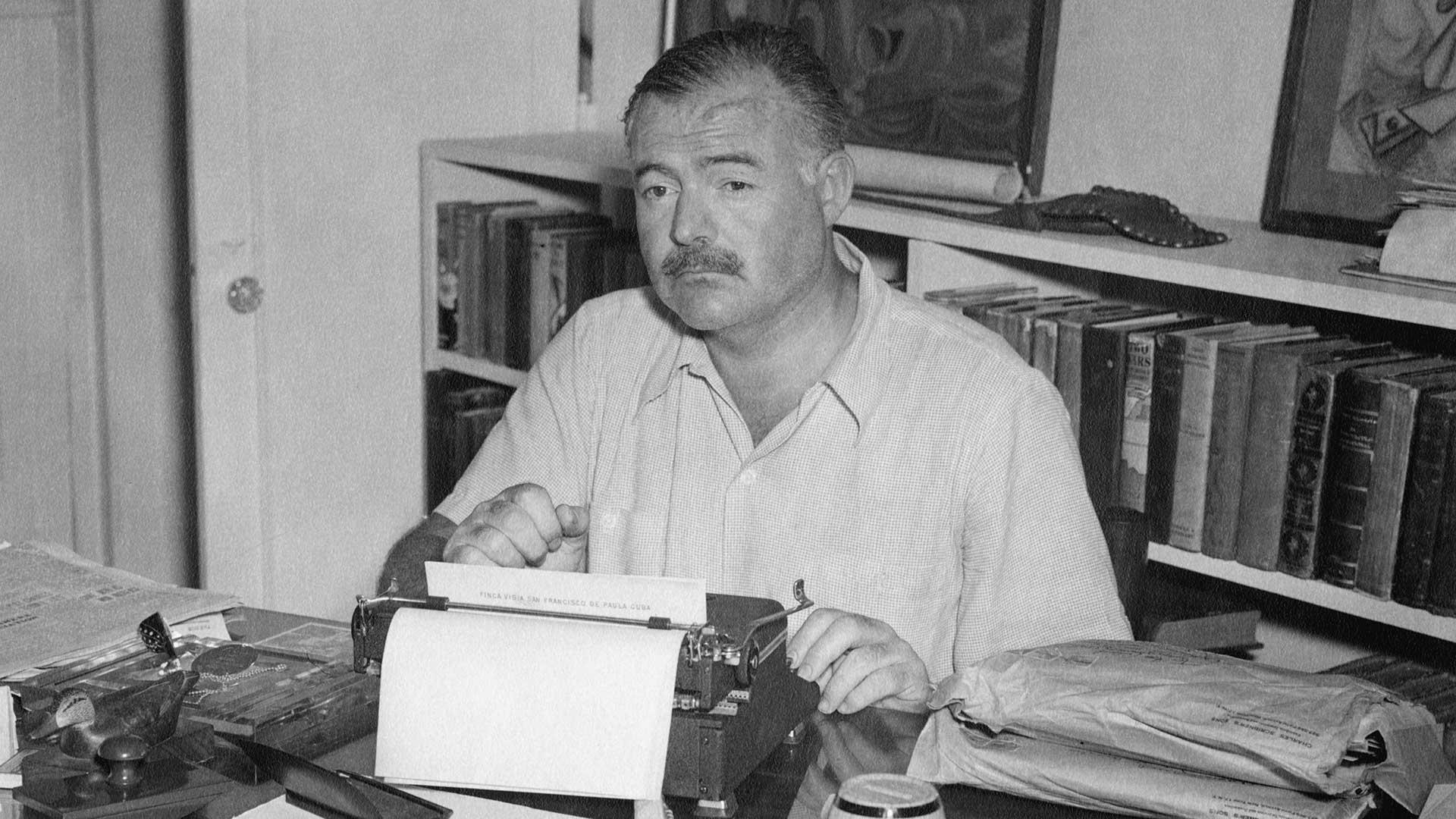
Hemingway, a three-part, six-hour documentary film by Ken Burns and Lynn Novick, examines the visionary work and the turbulent life of Ernest Hemingway, one of the greatest and most influential writers America has ever produced. Interweaving his eventful biography — a life lived at the ultimately treacherous nexus of art, fame, and celebrity — with carefully selected excerpts from his iconic short stories, novels, and non-fiction, the series reveals the brilliant, ambitious, charismatic, and complicated man behind the myth, and the art he created. Directed by Ken Burns and Lynn Novick, written by Geoffrey C. Ward and produced by Sarah Botstein, Novick and Burns.
Premieres April 5-7, 2021 on Nine PBS.https://player.pbs.org/partnerplayer/Wyf2FxJ9ObCcyfPJKQp3YQ==/?autoplay=false&topbar=false&callsign=KETC
Ken Burns and Lynn Novick explore the writer and his enduring influence. Coming April 2021
Preview of the new Hemingway biography on PBS: Sounds harsh but honest.
‘Lucky for him he could write’: Ken Burns takes on Ernest Hemingway
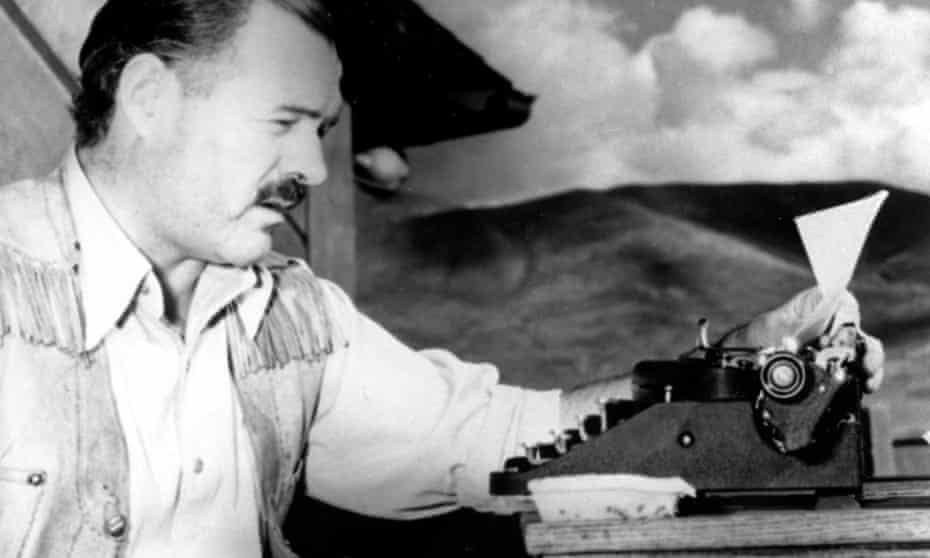
Ernest Hemingway at his typewriter as he works on For Whom the Bell Tolls at Sun Valley lodge, Idaho, in 1939. Photograph: AP
Too white, too male, too privileged – and according to some critics, that’s just one of the co-directors. A new PBS documentary on an American giant sails in stormy waters
Speaking at a press event for the new PBS documentary about Ernest Hemingway, the actor Jeff Daniels said of the man whose words he reads: “Lucky for him he could write.”
Over six hours, the co-directors Lynn Novick and Ken Burns subject a giant of American literature to an unsparing psychiatric exam.Ken Burns: How Vietnam War sowed the seeds of a divided AmericaRead more
“I was aware of this sort of edifice of the macho characteristic and good writing,” Burns said, about the scale of the task. “The writing only increased in its power and glory and majesty. And as I confronted all of this negative stuff, it became important that the art transcended it and basically didn’t excuse it. And we do not excuse him. And we hold his feet to the fire.”
All of this negative stuff: Hemingway was married four times. He was psychologically and physically abusive. He used and wounded his friends. If unsurprisingly in a man born in middle-class Illinois in 1899, his views on race were prejudiced. He died by his own hand, at 61, 60 years ago.Advertisementhttps://33d6d92e8945d70fc2e39e370912f961.safeframe.googlesyndication.com/safeframe/1-0-37/html/container.html
In episode one of Burns and Novick’s film, the poet and scholar Stephen Cushman says it isn’t possible to “launder” Hemingway. The directors do not try. They have been working 40 years and have created a body of work built on the great 1990 series The Civil War that has grown to encompass jazz, baseball, the second world war, Vietnam and more.
With Hemingway, Burns said, they found that “as we often find with great artists, there is this terrible price to pay among those closest to that person and among the outer circle and, of course, most notably to one’s self.”
Novick “felt pretty clear that I didn’t like Hemingway the man and that I wasn’t sure how I am going to feel spending six hours with him as a viewer … and yet at the end, I think we have tried to get under his skin, as Edna would say. I felt a lot more compassion for him and his struggles and his demons.”
Edna O’Brien lights up the film. In episode one, the great Irish novelist defends Hemingway from a common charge: that he hated women.Edna O’Brien on turning 90: ‘I can’t pretend that I haven’t made mistakes’Read more
Of Up in Michigan, an early short story which describes a rape, O’Brien says: “I would ask his detractors, female or male, just to read that story. And could you in all honor say that this was a writer who didn’t understand women’s emotions and who hated women? You couldn’t. Nobody could.”
O’Brien also says A Farewell to Arms, the novel of the first world war which ends with a death in childbirth, “could have been written by a woman. I regard that as a compliment. Hemingway might regard it as an insult. But I don’t, because it is the androgyny in a man or a woman that allows them, even if briefly, to be able to put themselves inside the skin of the thing.”
The notion of Hemingway’s buried androgyny surfaced in the press session too.
“What we need is a more nuanced sense of his sexuality,” Burns said, “His very complicated and evolving sexuality. And in fact, Edna hits on it better, like, what is it in us that’s obligated to inhabit the other. And that’s an interesting part.”
“Maybe it was born when [Hemingway’s] mother twinned him, putting him in dresses and his sister in pants so that they could be alike. Maybe it is born of some other thing. But he has a curiosity about role changes. His wives cut their hair short, to look like boys. He wants them to call him ‘Katherine’ and he calls them ‘Pete’ in the bedroom. There’s some very interesting stuff.”
Appropriately for America in 2021, this is a Hemingway who inflicted trauma but also suffered it, including severe head injuries, which Burns and Novick examine.
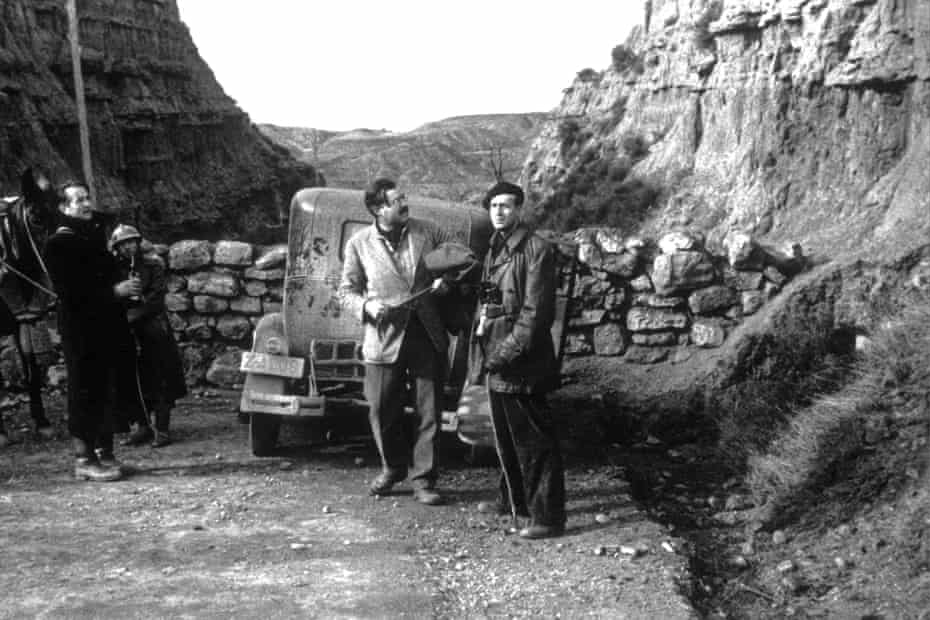
And so to race. Never mind Hemingway – critics have spoken harshly of Burns’ own place in PBS’s output and his choice of subjects.
In short, are the director and those whose stories he tells too white and too male to be so strongly backed by the public broadcaster? Burns and Novick were duly asked about their “criteria for individuals who become worthy of their own series versus become included in a broader series”, as “it seems like it’s a lot of white politicians and artists and [the] only three black individuals have been athletes”.
“We pick subjects,” Novick said. “They pick us. It is a very organic process. And we focus on people from a whole wide diverse array of American characters and important figures in our history. So, I think we don’t really want to think about parsing our work into these kind of categories … We are pretty expansive in what we have taken on, what we’re interested in.”
Burns said: “I think Louis Armstrong deserved a 10-hour series by us, and just was the central part of the Jazz series. So too we could have done a biography of Frederick Douglass out of The Civil War, of many other subjects that we are doing that are complicated in that way, and many other people who aren’t getting the full treatment, that are constituent parts of these other things.”
Burns also said he was currently deeply involved in an eight-hour film about Muhammad Ali, due in September. But in the end, he said, choosing subjects “has to be done with your gut”.Ken Burns’s The Civil War: America’s greatest documentary rides againRead more
Hemingway’s own instincts included a need for wholesale slaughter and gutting, whether on African safari or from boats off the Florida Keys. But amid it all, Novick and Burns contend, whether hunting or watching bullfights or reporting from the bombarded cities of Spain, he found ways to pin humanity down on the page. If he has now become a problem, it is a problem that should at least be confronted.
“In some ways this is [our] most adult film,” Burns said. “I don’t mean that in any rating way. I mean that in how complicated it is to be able to tolerate contradiction, to be able to tolerate undertow, to understand that he could be one thing and the opposite of that thing at the same time.”
Daniels is not the only big name attached to the project. Meryl Streep voices the great journalist Martha Gellhorn, Hemingway’s third wife. Keri Russell, Mary-Louise Parker and Patricia Clarkson read the words of Hadley Richardson, Pauline Pfeiffer and Mary Welsh.
Daniels described a sort of cleansing experience. Hemingway, he said, has “a brevity and a simplicity that … just boils down to him telling you the truth. And there’s no adornment. Since doing the reading for Ken and Lynn, I have ceased using adjectives and adverbs because I felt so guilty. That’s what it felt like.
“And like Edna was saying, he inhabits the skin of his opposite, and that’s what actors do. That’s what great artists do. And it’s nice to know that those of us who are acting and do that didn’t invent it. People like Hemingway did.”
- Hemingway premieres on PBS from 5 to 7 April
Alternate Endings to A Farewell To Arms
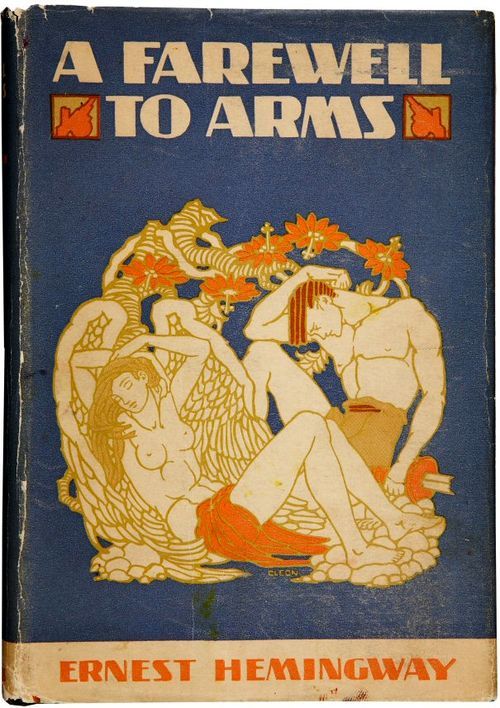
Happiness in intelligent people is the rarest thing I know. Ernest Hemingway

So, yes it was a sad ending that leaves you feeling empty and like nothing is worth anything and love all ends up in the gutter and nothing matters. Where did Frederic Henry go after he left the hospital and walked out into the rain? Why couldn’t there be a happy ever after for Catherine and Frederic? The short answer is that this is Hemingway after all. It’s just another variation of isn’t it pretty to think so?
Apparently Hem did consider quite a few other ways of ending this classic. In an interview in The Paris Review in 1958, Hemingway commented that the final words of “A Farewell to Arms,” his wartime masterpiece, were rewritten “39 times before I was satisfied.” Actually his grandson Sean believes that there are over 47 versions of the ending not to mention different working titles of the book. The alternate endings are labeled and gathered in an appendix in the new edition. For those of us who care about this stuff, it’s a mind boggling enterprise and we play out all of the what ifs and hope that our favored ending had made it through. The reality is that it was Hem’s book and he gets to choose. Would the impact have been the same if Catherine and Frederic set up housekeeping in Switzerland? Hard to say but we know the impact as it is plays out intense and soul-searing. It stays with you forever.

So what are just a few of the options Hem considered?
1) “The Nada Ending,” Hemingway wrote, “That is all there is to the story. Catherine died and you will die and I will die and that is all I can promise you.” Holy gosh. We need some hope.

2) The “Live-Baby Ending,” listed as No. 7, concludes, “There is no end except death and birth is the only beginning.” Not too cheery either.
3) The “Fitzgerald ending,” suggested by F. Scott Fitzgerald, that the world “breaks everyone,” and those “it does not break it kills. It kills the very good and very gentle and the very brave impartially. If you are none of these you can be sure it will kill you too but there will be no special hurry.”

Alternate titles Hem considered were: “Love in War,” “World Enough and Time,” “Every Night and All” and “Of Wounds and Other Causes.” One title, “The Enchantment,” was crossed out by Hemingway.
Hem’s only remaining son, Patrick, noted that the original notes give insight into his father. The revisions are being published by agreement of Hem’s estate and his old publisher, Scribner’s under the imprint of Simon and Shuster.
I believe that the JFK Library, Hemingway Collection, is where the original notes and pages are being preserved. I trust that Hem chose the one that best expressed his intent.
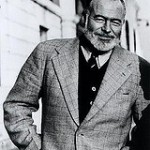
Is this Hemingway’s Renata? To me, not exactly but we all have a vision.
The Undoing’s Matilda De Angelis wraps up in a padded jacket as she arrives on the set of Across The River And Into The Trees
PUBLISHED: 11:23 EST, 28 January 2021 | UPDATED: 13:25 EST, 28 January 2021
She shot to worldwide fame thanks to her enthralling performance in Nicole Kidman and Hugh Grant’s gripping thriller The Undoing late last year.
And Matilda De Angelis was back at work as she arrived on the set of her new movie, Across The River And Into The Trees, in Venice for another day of filming on Thursday.
The Italian actress, 25, looked focused as she prepared for an intense day in front of the camera. +4
+4

Ready to go: Matilda De Angelis was back at work as she arrived on the set of her new movie, Across The River And Into The Trees, in Venice for another day of filming on Thursday
Matilda kept wrapped up warm under hooded navy padded jacket and wore a cosy-looking beige pair of UGG boots.

